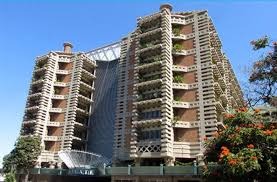A wave of green building initiatives is sweeping through the real estate sector, marking a significant shift towards sustainable development practices. The revolution is not only reshaping the skyline but also challenging conventional construction methods, as builders and developers embrace eco-friendly designs and technologies.
Amon Mashonganyika an architect said the green building revolution is creating healthier and more resilient communities. “The green building revolution in Zimbabwe is a critical step towards mitigating the environmental impact of urbanization. By incorporating energy-efficient materials, renewable energy sources, and water-saving techniques, we are not only reducing carbon emissions but also creating healthier and more resilient communities,” said Mashonganyika
Jacob Murairwa a real estate consultant said there has been growing demand for green buildings in recent times both for residential and commercial clients. “As a developer, I’ve witnessed a growing demand for green buildings among both residential and commercial clients. Not only do these buildings offer long-term cost savings through reduced utility bills, but they also attract tenants who prioritize sustainability and corporate social responsibility,” said Murairwa
President of the Green Building Council of Zimbabwe, Dr. Mike Juru in one of his opinion pieces said the Eastgate Centre was an iconic example of the green revolution. “In Zimbabwe, we have reason to celebrate the pacesetters of this rewarding global revolution, whose first footsteps date back to the year 1993 when a US$35,000,000 investment gave birth to Eastgate Centre in 1996. Situated at the heart of Harare’s central business district, this giant business centre is an iconic example of sustainable architecture through its biomimicry.
“Interestingly, it is not only corporates across the economic divide that have embraced green sustainable energy, individuals in the residential property space have also joined the solar craze that has led households to mass installation of solar geysers and the mass adoption of solar-powered homes,” said Dr. Juru



